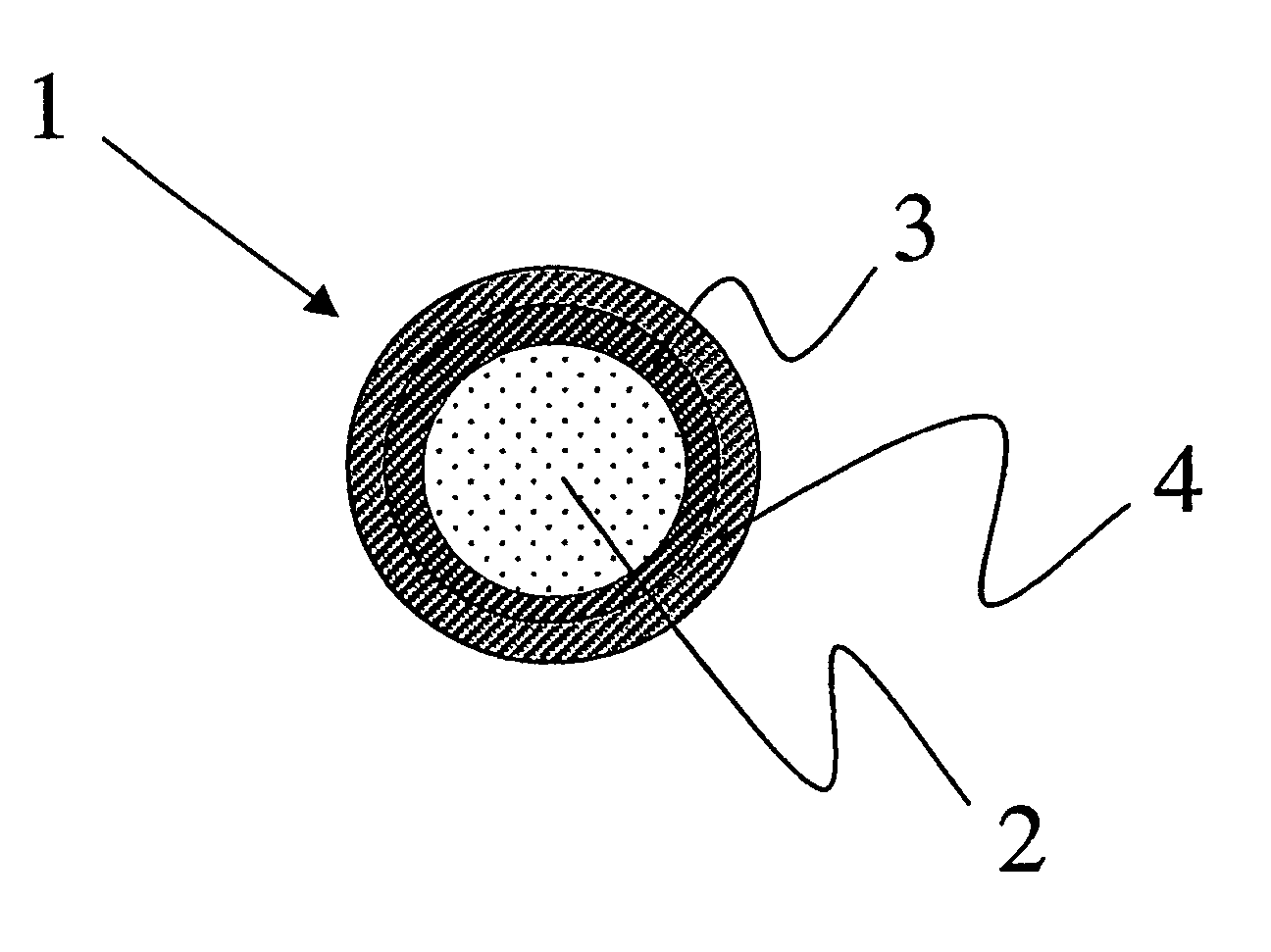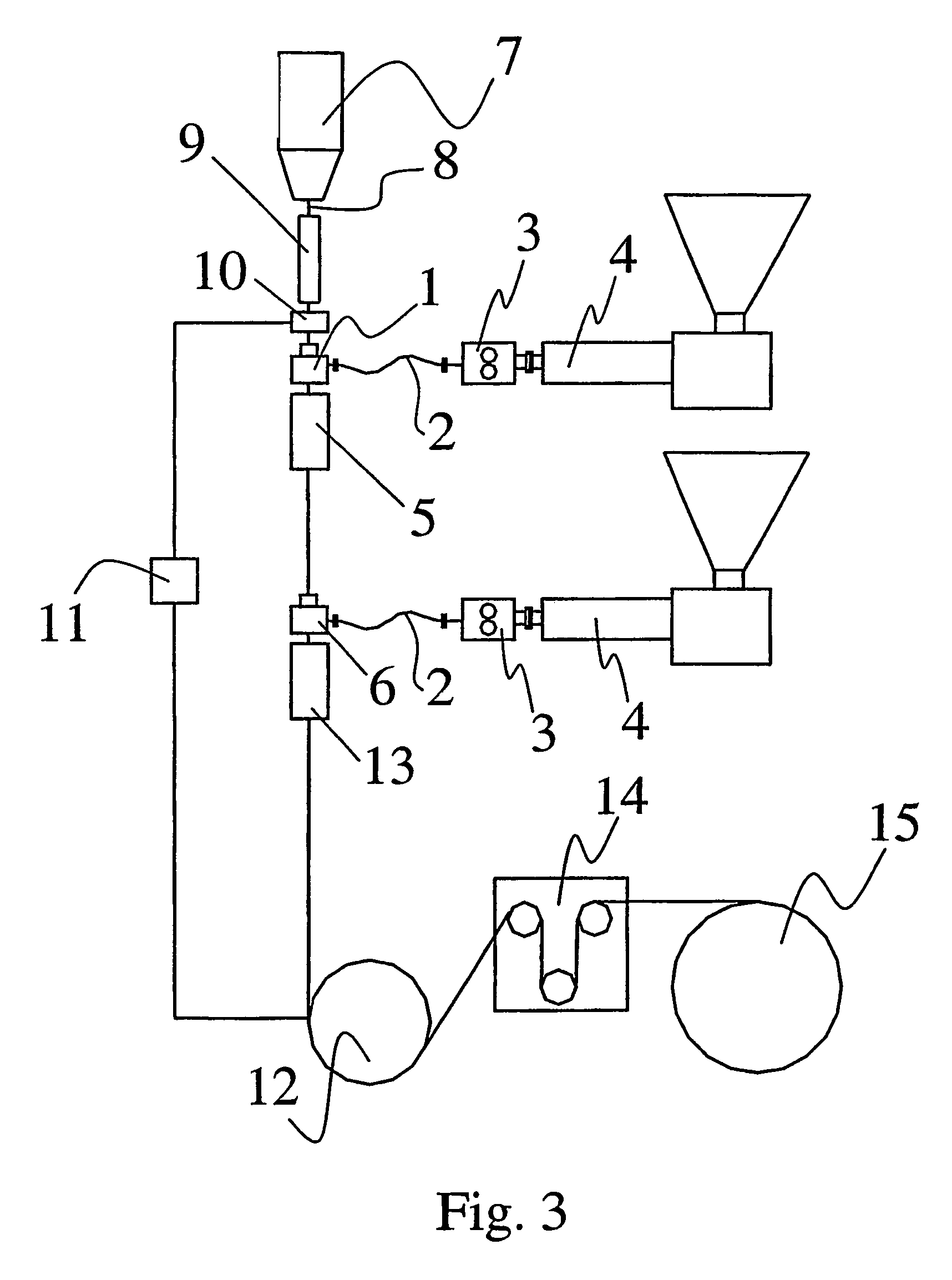Optical fiber with thermoplastic material based coating
a technology of optical fiber and thermoplastic material, applied in the field of optical fiber, can solve problems such as microbending losses, and achieve the effect of improving the wettability (“wetting”) of the coating
- Summary
- Abstract
- Description
- Claims
- Application Information
AI Technical Summary
Benefits of technology
Problems solved by technology
Method used
Image
Examples
examples 1 – 4
EXAMPLES 1–4
Thermoplastic Materials
[0095]The following thermoplastic materials were used: the amounts of the components (% by weight) are given in Table 1.
[0096]
TABLE 1EXAMPLE1234Arnitel ® EM400100———Arnitel ® EM460—100——Questra ® QA101——3025.0Kraton ® G1651——4952.5Flexon ® 815——2122.5Arnitel ® EM400: copolyether-ester from DSM;Arnitel ® EM460: copolyether-ester from DSM;Questra ® QA101: syndiotactic polystyrene from Dow Chemical;Kraton ® G1651: styrene-ethylene / butene-styrene from Kraton Polymer;Flexon ® 815: paraffinic oil from Exxon.
[0097]The thermoplastic materials of Example 3 and 4, were prepared by feeding the Questra® QA101 granules and the Kraton® G1651 granules which have been previously treated with a Flexon® 815 in a turbo mixer in order to allow the absorption of the paraffinic oil into the Kraton® G1651 granules, into a 20 mm double-screw Brabender mixer, at a temperature of about 270° C., until a complete homogenization was reached. The thermoplastic material left the...
example 5
Production of an Optical Fiber
[0120]A clad-type optical fiber of quartz glass having a diameter of 125 μm was coated by extrusion utilizing a screw type extruder by Gimac having a diameter of 12 mm and a tubing die. The temperature profile of the extruder was the following: 210 / 220 / 245 / 260° C. The drawing speed was 200 m / min and 400 m / min. The single coating made from the thermoplastic material according to the present invention (Examples 1 and 2), was applied to a thickness of 60 μm.
[0121]A test specimen of the optical fiber thus obtained was subjected to a strip test according to the Bellcore Standard GR-20-CORE, July 1998, section 4.4.2. To this end, the fiber was conditioned at room temperature, with a humidity of 50%, for 7 days. The optical fiber coating gave an average strip force value of 5.6 N in the case of Example 2 and 3.1 N in the case of Example 1: the obtained data are in according with the above Standard.
Hydrogen Emission Measurement
[0122]The optical fiber obtained a...
PUM
| Property | Measurement | Unit |
|---|---|---|
| Vicat point | aaaaa | aaaaa |
| Vicat point | aaaaa | aaaaa |
| Vicat point | aaaaa | aaaaa |
Abstract
Description
Claims
Application Information
 Login to View More
Login to View More - R&D
- Intellectual Property
- Life Sciences
- Materials
- Tech Scout
- Unparalleled Data Quality
- Higher Quality Content
- 60% Fewer Hallucinations
Browse by: Latest US Patents, China's latest patents, Technical Efficacy Thesaurus, Application Domain, Technology Topic, Popular Technical Reports.
© 2025 PatSnap. All rights reserved.Legal|Privacy policy|Modern Slavery Act Transparency Statement|Sitemap|About US| Contact US: help@patsnap.com



